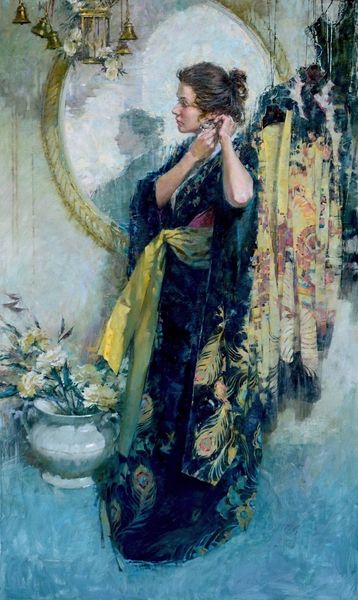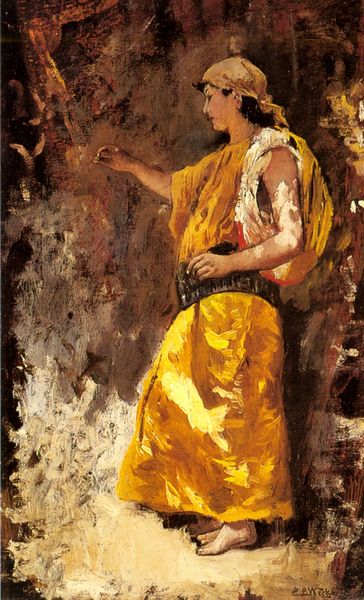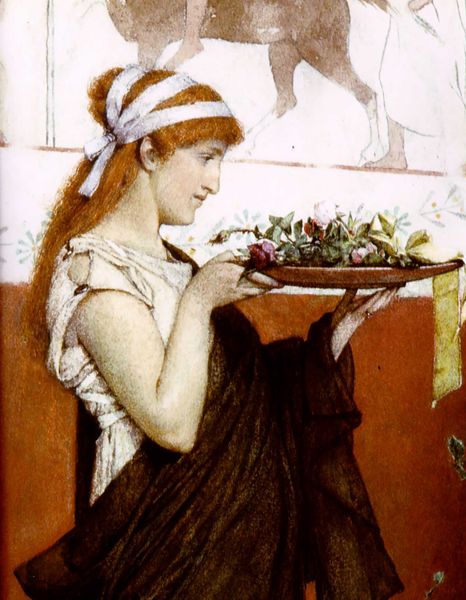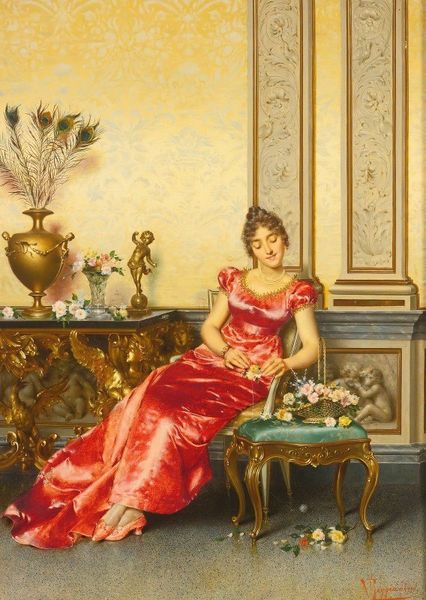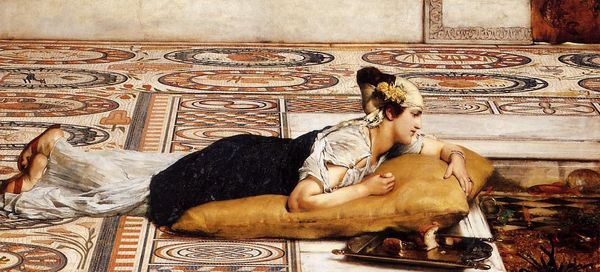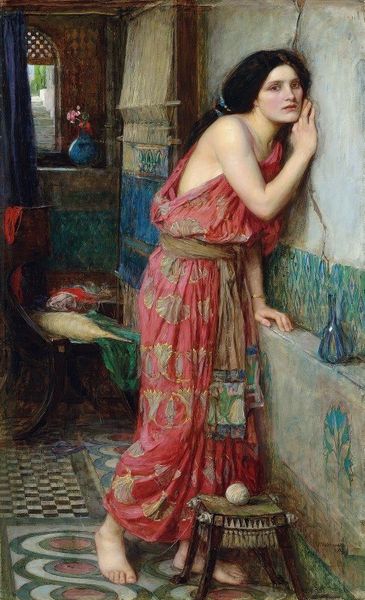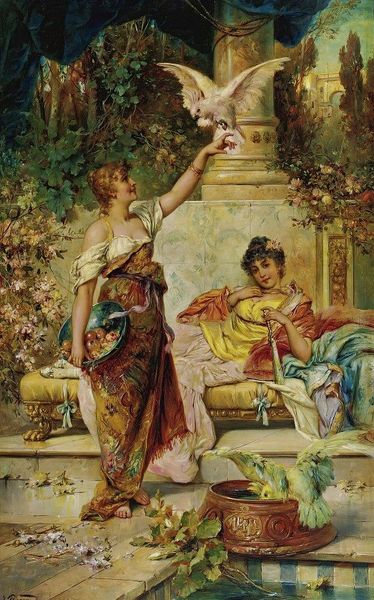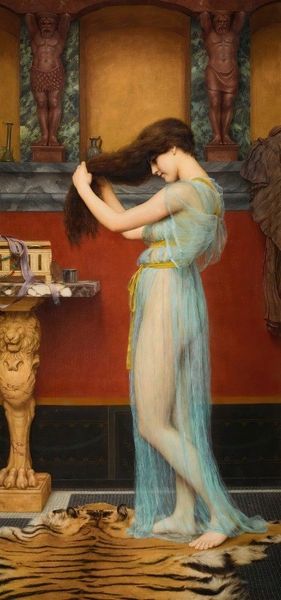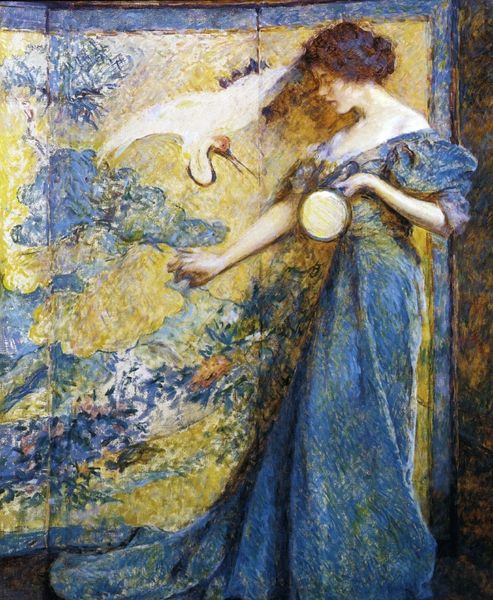
painting, oil-paint
#
portrait
#
gouache
#
painting
#
oil-paint
#
oil painting
#
orientalism
#
genre-painting
Copyright: Public domain
Editor: This is "Girl Who Fits the Vase," an oil painting attributed to Osman Hamdi. There's a strong sense of stillness, despite the figure being caught in an active pose. What strikes you most about this piece? Curator: The painting invites us to examine orientalist representation, specifically the depiction of women in these settings. Consider the title: "Girl Who Fits the Vase." Doesn’t it subtly reinforce the notion of women as decorative objects, fitting into prescribed spaces? How might Hamdi, as an Ottoman intellectual trained in Europe, be both perpetuating and perhaps critiquing these stereotypes? Editor: That's fascinating, I hadn't considered that the title itself could be interpreted critically. The woman's elaborate clothing and the opulent interior certainly contribute to the idea of her being part of a decorative scene. Curator: Exactly! The clothing functions as more than mere fabric. The yellow robe could represent constraints and prescribed roles rather than simply aesthetic beauty, while the fallen flower arrangements suggest themes of loss, fragility, or even the discarding of traditional roles. What does the arrangement of flowers suggest to you? Editor: The fallen flowers introduce a sense of disruption, challenging the picture's tranquility. I had not focused on the importance of these small visual cues until you pointed them out. Curator: Indeed! Even the pose challenges orientalist stereotypes of languid passivity. She's actively engaged with arranging flowers. In thinking through what a post-colonial critic might suggest, do you think she is perhaps subverting these imposed gendered expectations through these subtle actions? Editor: Thinking about it now, her actions introduce complexity to how women of that era might negotiate cultural norms. I'll certainly never perceive similar art in the same way. Curator: Precisely, understanding such visual languages allows us to analyze their power, and maybe disrupt such historical structures of representation.
Comments
No comments
Be the first to comment and join the conversation on the ultimate creative platform.
